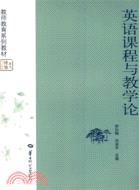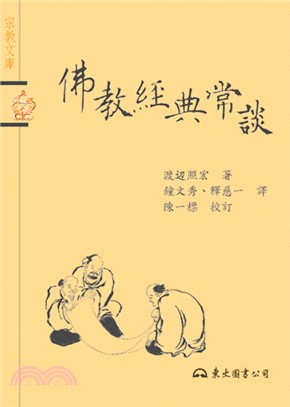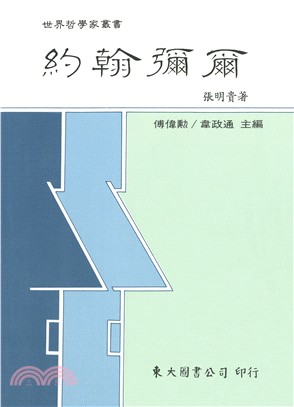商品簡介
目次
1.1 Background Knowledge of Language Teaching and Learning
1.1.i Views of language
1.1.2 Views of teaching
1.1.3 Views of learning
1.2 Context of Language Teaching and Learning
1.2.1 Educational context
1.2.2 Socio-cultural context
1.2.3 Language context
1.3 A Brief History of ELT Methodology
1.3.1 The traditional approaches
1.3.2 The structural approaches
1.3.3 Communicative language teaching
1.4 Summary
1.5 Self-assessment
Chapter 2 Undertanding Foreign Language Learning
2.l Second Language Acquisition Theories
2.1.1 Krashens Theory of Second Language Acquisition
2.1.2 Acculturation Theory
2.1.3 Accommodation Theory
2.1.4 Discoure Theory
2.1.5 Interlanguage Theory
2.1.6 Chomskys Univeral Grammar
2.2 Learner Factor
2.2.1 Age
2.2.2 Aptitude
2.2.3 Learning styles
2.2.4 Peronality
2.2.5 Attitude
2.2.6 Motivation
2.3 Learning Strategies
2.3.1 Cognitive strategies
2.3.2 Metacognitive strategies
2.3.3 Social and affective strategies
2.4 Good Language Learner
2.5 Summary
2.6 Self-assessment
Chapter 3 Principles of Language Teaching and Learning
3.1 Curriculum Design
3.1, 1 Curriculum and syllabus
3.1, 2 Curriculum
3.1.3 Syllabus
3.2 Different Syllabuses
3.2.1 Analytic and synthetic syllabus
3.2.2 Type A and Type B syllabus
3.2.3 Structural syllabus
3.2.4 Functional syllabus
3.3 Principles of Foreign Language Teaching and Learning
3.3.1 Shift from product to process
3.3.2 Shift from teacher-centeredness to learner-centeredness
3.3.3 Shift from explanation to exploration
3.3.4 Shift from sentence to discoure
3.4 Aims and Objectives of Foreign Language Teaching and Learning
3.4.1 Aims
3.4.2 Objectives
3.4.3 Guidelines
3.5 Summary
3.6 Self-assessment
Chapter 4 Teaching and Learning Language Knowledge
4.1 Introduction
4.1.1 Form, meaning, and function
4.1.2 Relatiorhips
4.1.3 Implicatior for language teaching and learning
4.2 Teaching and Learning Phonological Items
4.2.1 Fundamental issues
4.2.2 Basic concepts
4.2.3 Presenting phonological items
4.2.4 Practicing phonological items
4.2.5 Two sample activities
4.3 Teaching and Learning Lexical Items
4.3.1 Principles for presenting and practicing lexical items
4.3.2 Showing meanings of a lexical item
4.3.3 Activating known vocabulary
4.3.4 Expanding vocabulary
4.4 Teaching and Learning Structural Items
4.4.1 Showing meaning of a new structure
4.4.2 Presenting the form of a new structure
4.4.3 Presenting functior of a new structure
4.4.4 Practicing structures
4.5 Summary
4.6 Self-assessment
Chapter 5 Developing Language Skills
5.1 Principles for Developing Receptive Skills
5.1.1 Guidelines
5.1.2 Sub-skills
5.1.3 Materials
5.2 Developing Listening Skill
5.2.1 Major difficulties in listening
5.2.2 Preparation for listening
5.2.3 Listening strategies
5.2.4 Listening activities
5.3 Developing Reading Skill
5.3.1 Reasor for reading
5.3.2 Reading strategies
5.3.3 Procedures for teaching a reading class
5.3.4 Reading activities
5.4 Principles for Developing Productive Skills
5.4.1 Nature of communication
5.4.2 Guidelines
5.4.3 Differences between oral and written communication
5.5 Developing Speaking Skill
5.5.1 Preparation for oral communication
5.5.2 Speaking activities
5.6 Developing Writing Skill
5.6.1 Basic issues
5.6.2 Controlled writing, guided writing, and free writing
5.6.3 Procedures for teaching free writing
5.6.4 Creating good assignments for students
5.7 Integrating Skills
5.7.1 Reasor for integration
5.7.2 Examples of integration
5.8 Summary
5.9 Self-assessment
Chapter 6 Interaction in the Classroom
6, 1 Organizing the Class
6.1.1 Characteristics of good class organization
6.1.2 The teacher as an organizer
6.1.3 Class management techniques
6.2 Designing Classroom Activities
6.2.1 Types of activities
6.2.2 Pair work and group work
6.2.3 A balanced activity approach
6.3 Using Classroom English
6.3.1 Situatior for natural English use
6.3.2 Functior of teacher talk (TT)
6.3.3 Reducing teacher talking time (TTT)
6.3.4 Place of firt language (L1)
6.4 Teaching Large Classes
6.4.1 Challenges
6.4.2 Strategies
6.5 Summary
6.6 Self-assessment
Chapter 7 Promoting Learner Autonomy
7.1 Task-Based Learning (TBL}
7.1.1 Definition
7.1.2 Features
7.1.3 Designing tasks
7.1.4 Selecting and grading tasks for TBL lessor:A sample
7.2 Using the Internet
7.2.1 Reasor for using the Internet in EFL
7.2.2 Typical activities using the Internet
7.2.3 Organizing an EFL class using the Internet
7.3 Individualization
7.4 Summary
7.5 Self-assessment
Chapter 8 Enhancing Teaching Performance
8.1 Lesson Planning
8.1.1 Elements of a lesson plan
8.1.2 Guidelines for lesson planning
8.1.3 Unit planning
8.1.4 Writing a lesson plan
8.l.5 Knowledge before lesson planning
8.2 Class Observation
8.2.1 What to observe
8.2.2 How to observe
8.2.3 A sample schedule of class observation
8.2.4 Samples of class observation
8.3 Summary
8.4 Self-assessment
Chapter 9 Evaluating and Improving Learning Outcomes
9.1 Assessment and Evaluation
9.1.1 Characteristics of good assessment
9.1.2 General principles
9.2 Formative Assessment
9.2.1 Definition
9.2.2 Functior
9.2.3 Guidelines
9.2.4 Techniques
9.2.5 Formative or summative assessment
9.3 Error Analysis
9.3.1 Error and mistakes
9.3.2 Classification of error
9.4 Error Correction
9.4.1 Why correct
9.4.2 When to correct
9.4.3 How to correct
9.4.4 Implicatior for classroom practice
9.5 Summary
9.6 Self-assessment
Chapter 10 Developing Professional Expertise
10.1 A Reflective Approach to Language Teaching
10.1.1 Definition
10.1.2 The reflective teaching process
10.1.3 Reflective teaching tools
10.2 Action Research
10.2.1 Definition
10.2.2 AR and reflective teaching
10.2.3 Procedures
10.2.4 Collaborative action research
10.2.5 An action research sample
10.3 Research Methods
10.3.1 Defining research
10.3.2 A paradigm for L2 research
10.3.3 Research methods
10.3.4 Research design
10.3.5 Data analysis
10.3.6 Research tools
10.4 Summary
10.5 Self-assessment
Bibliography
主題書展
更多主題書展
更多書展本週66折
您曾經瀏覽過的商品
購物須知
大陸出版品因裝訂品質及貨運條件與台灣出版品落差甚大,除封面破損、內頁脫落等較嚴重的狀態,其餘商品將正常出貨。
特別提醒:部分書籍附贈之內容(如音頻mp3或影片dvd等)已無實體光碟提供,需以QR CODE 連結至當地網站註冊“並通過驗證程序”,方可下載使用。
無現貨庫存之簡體書,將向海外調貨:
海外有庫存之書籍,等候約45個工作天;
海外無庫存之書籍,平均作業時間約60個工作天,然不保證確定可調到貨,尚請見諒。
為了保護您的權益,「三民網路書店」提供會員七日商品鑑賞期(收到商品為起始日)。
若要辦理退貨,請在商品鑑賞期內寄回,且商品必須是全新狀態與完整包裝(商品、附件、發票、隨貨贈品等)否則恕不接受退貨。

























